Many of the historic houses of Hawthorne Street are actually in Stockbridge – but they’re often associated with Lenox.
Hawthorne Street as we know it did not exist at the time of some of the early estates discussed, so we’ll have to use some imagination as to location.
Highwood
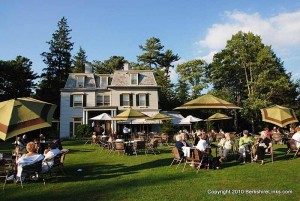
When the Wards of Boston constructed Highwood, they touched off the era of Lenox as a resort. Intellectually curious and engaging, they attracted others to the lovely setting.
Highwood is now owned by the Boston Symphony Orchestra and is used for Tanglewood special events.
Tanglewood
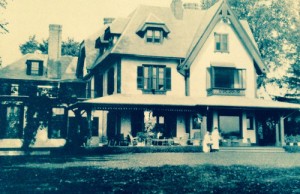
Tanglewood was built by Caroline Sturgis Tappan (1819-1888) overlooking the Stockbridge Bowl. Caroline and her husband, William Aspinall Tappan (1820-1905) had purchased the property in 1849 next door to their friends the Wards. Until they built their own
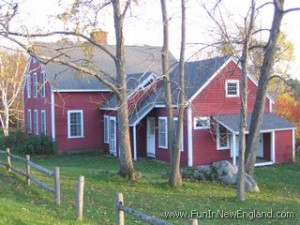
property, they stayed at the red cottage that would be home to the Hawthornes in 1850 and then rented Highwood from the Wards.
Given the highly cultural bent of this family, it’s not surprising that Caroline’s granddaughter, Rosamond Dixey Brooks, offered Serge Koussevitsky the family house, gardens, lawns and farm as a home for the summer music festival.
Wheatleigh
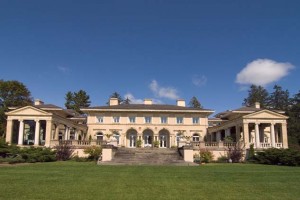
Wheatleigh was initially built for railroad financier H.H. Cook, who may have intended the property for one of his daughters from the start. He gave Wheatleigh to his daughter Georgie who had married Signor Carlos Manuel d Heredia. The groom was originally from Cuba and was sometimes called the Count de Heredia. Wheatleigh
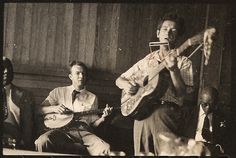
and been designed by Peabody and Stearns with plans for the ground by Frederick Law Olmsted.
Mrs. De Herdia’s husband died in 1918 but she continued to spend part of her year at Wheatleigh, until her death in 1946.
The main house survives as a luxury hotel, but the rest of the estate was broken up and took different directions. Some of the outbuildings were used in the 1950’s and 1970’s for the Lenox Jazz festival which brought a lot of new rhythm and folk music to the
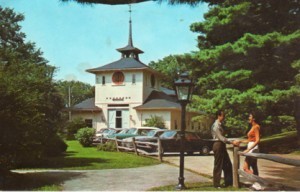
Berkshires. The next step in the evolution of music in the area was Music Inn which drew crowds with acts ranging from Joan Baez to the Kinks.
The outbuildings have now been repurposed as White Pines Condominiums.
Brookhurst
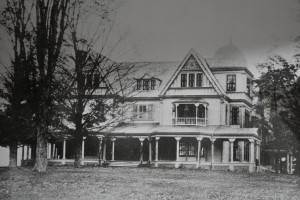
The couple that built (the second) Brookhurst exemplified how closely associated the cottagers were – in Lenox and elsewhere. The husband in the couple, Newbold Morris (1868-1928) was Edith Wharton’s cousin and used many of the same designers that Mrs. Wharton had used on The Mount: Ogden Codman and Beatrix Jones (Farrand).
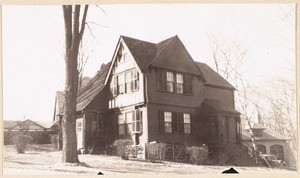
The original Eastlake style Brookhurst (except for the stable and gatehouse) had burned. That gave the couple a free hand in building a new house and they hired Francis Hoppin to design a very different looking Georgian revival house.
The Morris Family
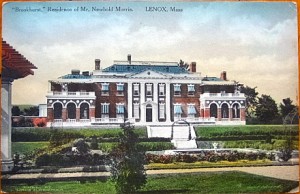
Newbold’s family had roots back to colonial New York and New Jersey. His wife, Helen Schermerhorn Kingsland Morris (1876-1956) was a second cousin with equally deep New York connections.
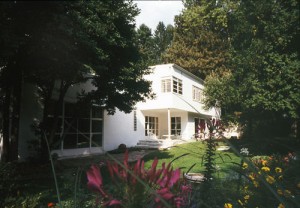
Of the three sons, one, George Morris, built his now famous modernist home and studio on the property with his wife, the former Suzy Frelinghuysen. It is now a museum open to the public.
Some of the land on the estate was donated to the Town of Lenox for the Morris Elementary School on West. St. As an added gift, George

Morris painted an abstract mural which stands at the school entrance today.
Another brother, Stephen, took over the main house, but had it reduced in size. That house has now been sold out of the family but remains in private hands.
————————————-
For much more on the architecture of these houses and the people who lived in them, see
Houses of the Berkshires, 1870-1930, by Richard S. Jackson Jr. and Cornelia Brooke Gilder, Acanthus Press, 2006
The Tanglewood Circle, Hawthorne’s Lenox, by Cornelia Brooke Gilder with Julia Conklin Peters
The Berkshire Cottages, A Vanishing Era, by Carole Owens, Cottage Press, Inc. 1980